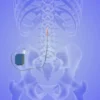The overwhelming majority of whiplash injuries are caused by motor vehicle accidents. The medical profession characterizes these as acceleration-deceleration injuries when the cervical spine (neck) and its supporting tissues are stretched beyond their typical limits. An acceleration-deceleration whiplash injury can be so severe that it can cause cervical vertebrae to fracture. Brain injuries can also be caused, even if there isn’t any exterior physical trauma to the victim’s head.
Acceleration and Deceleration Injuries
The most common types of accidents for victims to suffer whiplash injuries are rear-end and side-impact car accidents. Seat restraint systems might do their job by keeping vehicle occupants from being ejected or crashing into a dashboard or windshield, but a victim’s head can get violently thrown forward and backward or from side to side. That’s when hyperflexion and hyperextension whiplash injuries occur. Microscopic tears stretch muscles and ligaments that hold vertebrae and spinal discs in their natural positions. Those tears can cause vertebral misalignment, neck pain, spinal nerve compression, and loss of range of motion from the neck over to a shoulder. Sometimes, the pain and discomfort will even travel down an arm and into the hand.
Whiplash and Traumatic Brain Injury
A serious case of whiplash can even cause a traumatic brain injury (TBI). The nature of the whiplash motion causes the victim’s brain to be thrown back and forth or from side to side and impact with the interior of the skull may occur, resulting in dangerous brain bruising and swelling. The bruising might occur on one or both sides of the brain. Even tearing of brain tissue and nerves can result from a whiplash injury. These are known as diffuse axonal injuries, and they’re especially dangerous. Brain cells don’t regenerate, so permanent neurological deficits can occur. Here are some typical symptoms of TBIs:
- Headaches.
- Dilation of one or both pupils.
- Dizziness and nausea.
- Balance issues and loss of coordination.
- Memory problems.
- Visual difficulty, frustration, and depression.
- Cognitive issues and slurred speech.
- Sensitivity to light or sound.
- Sleep disturbances or the inability to awaken.
Whiplash Treatment Options
Don’t ignore a whiplash injury and assume that it’s going to improve in a few days. It’s actually likely to worsen. Get to an urgent care center or emergency room right away so that the cause of your whiplash injury is memorialized and its nature and extent are preliminarily diagnosed. Treatment options might range from a neck brace or medications to physical therapy, massage therapy, chiropractic care, treatment, or surgery.
To schedule a consultation or to learn more about Advanced Spine and Pain Center, click here!





